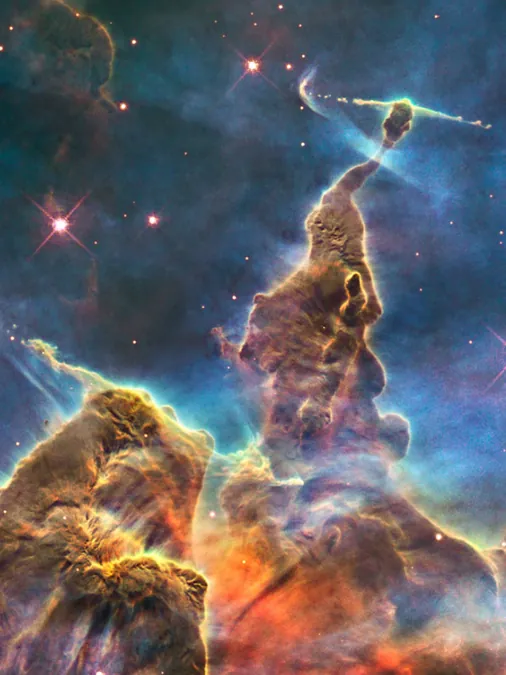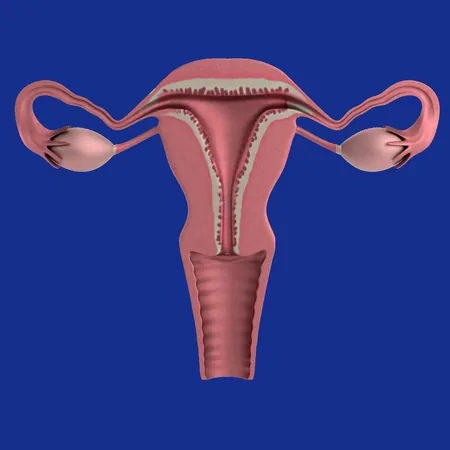
8 Breathtaking Space Images Captured by NASA's Hubble Space Telescope That Will Leave You in Awe!
2025-03-30
Author: Rajesh
NASA’s Hubble Space Telescope has become renowned for its stunning captures of the universe, providing glimpses into vast cosmic landscapes and intricate celestial structures.
Here are eight of Hubble's most spectacular images that not only demonstrate the telescope's capabilities but also evoke a sense of wonder about the cosmos!
1. NGC 1300
One of the finest images ever taken of an entire galaxy, NGC 1300, was showcased at the American Astronomical Society meeting in San Diego, California.
This breathtaking image reveals a splendid display of radiant starlight, glowing gas, and dark interstellar dust clouds, artfully combining these elements into a monumental 4-foot-by-8-foot portrait of this barred spiral galaxy. The depth and detail are unparalleled, offering a window into the intricate workings of galaxies.
2. NGC 2841
In NGC 2841, Hubble captures the dynamic process of star formation, a crucial element influencing the evolution of galaxies and planetary systems.
This beautiful image not only highlights the nascent stages of new stars but also serves as a reminder of the ongoing cosmic processes that shape our universe. The formation regions spark with energy, indicating where new planetary bodies may soon emerge.
3. Carina Nebula
The Keyhole Nebula, a stunning section within the Carina Nebula (NGC 3372), has been unveiled thanks to multiple observations made by Hubble.
This intricate composite image, created using six color filters from the Wide Field Planetary Camera 2 during April 1999, reveals extraordinary details of this vibrant stellar nursery. The Carina Nebula is a hotbed for star formation and showcases some of the most dramatic structures in our galaxy.
4. Westerlund 2
The stunning image of the Westerlund 2 star cluster features a vibrant mix of visible-light data from the Advanced Camera for Surveys along with near-infrared observations from the Wide Field Camera 3.
This beautiful cosmic area is emphasized by the nebula surrounding it, revealing the complexities of this stellar nursery. Westerlund 2 is acting as a forging ground for new stars, making it an exciting area of study for astronomers.
5. Ring Nebula (Messier 57)
Known as the Ring Nebula, this celestial gem displays a stunning array of colors and a dynamic morphology.
While it may appear as an ellipse from our vantage point on Earth, its true shape is more complex, resembling a distorted cosmic doughnut.
Integrating insights from both ground-based telescopes and the Hubble Space Telescope has allowed astronomers to glean new information regarding this magnificent nebula.
6. Dumbbell Nebula (Messier 76)
Located a staggering 3,400 light-years away in the constellation Perseus, the Dumbbell Nebula dazzles observers with its vibrant hues and shapes.
Although misclassified as a planetary nebula, it is, in fact, a stunning example of stellar evolution that continues to captivate both professional astronomers and hobbyists, serving as a profound reminder of the mysteries of the universe.
7. NGC 2174 (Monkey Head Nebula)
To commemorate 24 years in orbit, Hubble unveiled the mesmerizing NGC 2174, or the Monkey Head Nebula, located about 6,400 light-years away in the Orion constellation.
This image showcases a rich tapestry of colors and intricate structure, highlighting an active star-forming region where new stars are born amidst vibrant gases.
8. Mystic Mountain
Within the Carina Nebula lies Mystic Mountain, a beautiful structure that stands as a beacon amidst a turbulent stellar nursery.
Captured in honor of Hubble’s 20th anniversary, this stunning formation sits 7,500 light-years from Earth. It highlights the extraordinary processes of star formation, where new stars emerge from gas and dust, creating breathtaking cosmic vistas.
Conclusion
Hubble’s remarkable images not only offer beauty but also deepen our understanding of the universe.
These celestial snapshots continue to inspire astronomers and ignite curiosity about the cosmos for all of humanity.
So, don't forget to explore the wonders of space captured by Hubble and stay tuned for more astounding discoveries on our journey through the stars!




 Brasil (PT)
Brasil (PT)
 Canada (EN)
Canada (EN)
 Chile (ES)
Chile (ES)
 Česko (CS)
Česko (CS)
 대한민국 (KO)
대한민국 (KO)
 España (ES)
España (ES)
 France (FR)
France (FR)
 Hong Kong (EN)
Hong Kong (EN)
 Italia (IT)
Italia (IT)
 日本 (JA)
日本 (JA)
 Magyarország (HU)
Magyarország (HU)
 Norge (NO)
Norge (NO)
 Polska (PL)
Polska (PL)
 Schweiz (DE)
Schweiz (DE)
 Singapore (EN)
Singapore (EN)
 Sverige (SV)
Sverige (SV)
 Suomi (FI)
Suomi (FI)
 Türkiye (TR)
Türkiye (TR)
 الإمارات العربية المتحدة (AR)
الإمارات العربية المتحدة (AR)